
When you’re running a game or video on your computer, your screen suddenly goes blue and shows an error: SYSTEM SERVICE EXCEPTION (win32kbase.sys). You’re not alone. Many Windows users have experienced this issue. But don’t worry, it’s fixable. And you can try the methods below to fix it.
Try these methods
You don’t have to try them all. Just work your way down the list until you find the one that works for you.
Method 1: Run System File Checker
Method 4: Perform a system restore
Note: The screenshots below have been mostly taken from a Windows 10 operating system. If you are using Windows 11, please be aware that the visual appearance of your screen may vary slightly, but the steps to perform the task remain consistent.
Method 1: Run System File Checker
The win32kbase.sys blue screen error may be caused by system file corruption. You can run System File Checker and check if there’re any system files missing or corrupted. If there are any, the sfc/scannow command (System File Checker) will repair them.
Here’s how to run System File Checker to troubleshoot your win32kbase.sys problem:
- On your keyboard, press the Windows logo key, and type command prompt. Find Command Prompt from the list, then click Run as administrator.
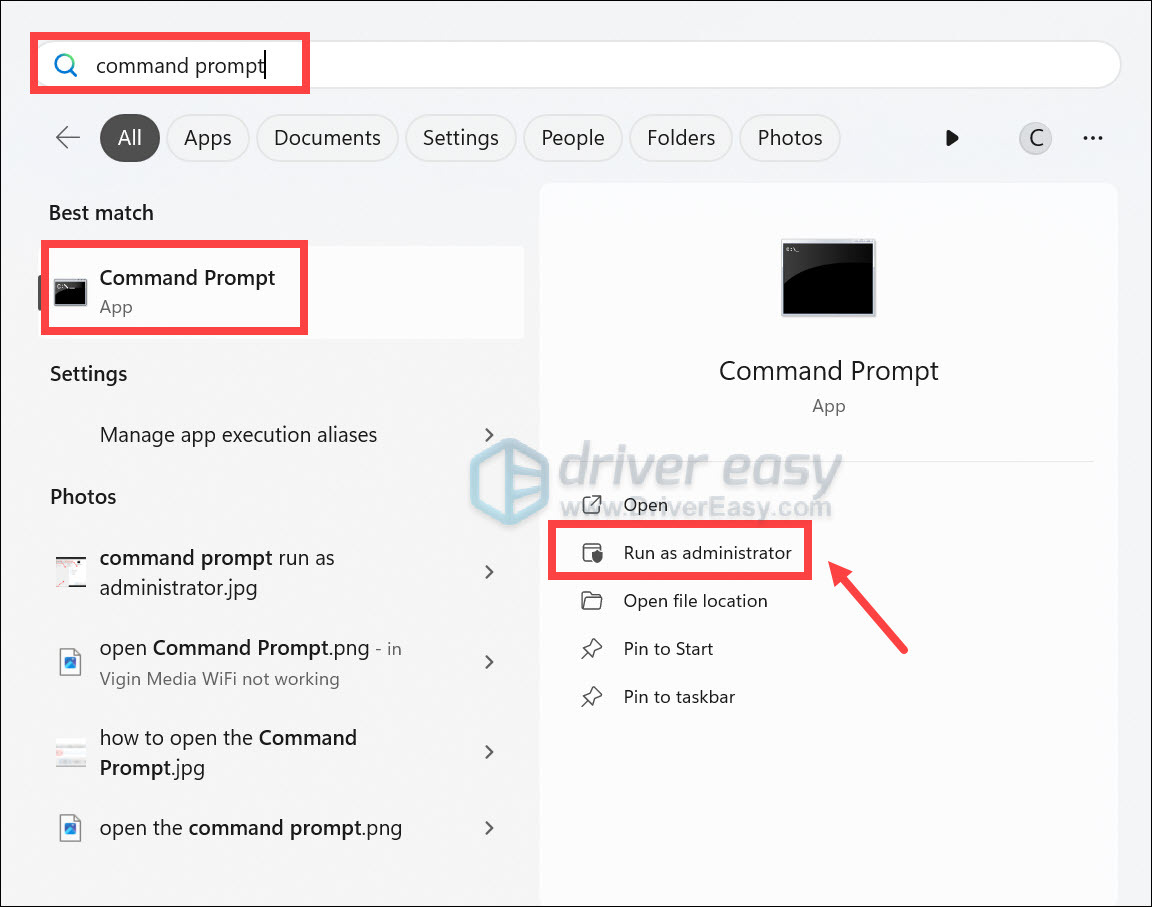
- Click Yes at the User Account Control prompt.
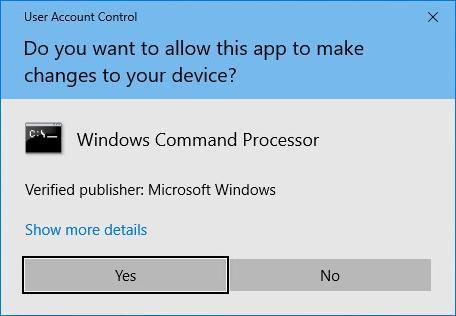
- Type sfc /scannow and hit Enter.
Note: There’s a space between sfc and /scannow.

- It should begin running a system scan, and will take some time. When it finishes, restart your computer and check for your win32kbase.sys problem.
While SFC can detect and replace missing or corrupted files from a known good cache, it has limitations. SFC relies on already cached system files, so any new corruption will go unseen. And deeper OS issues may prevent SFC from operating fully.
Method 2: Use the DISM tool
Another tool you can use to check your system and troubleshoot your win32kbase.sys problem is DISM.exe. It can help restore corrupted system files. Here’s how to use the DISM tool:
- On your keyboard, press the Windows logo key, and type command prompt. Find Command Prompt from the list, then click Run as administrator.

- Copy-paste the command below, then press Enter.
DISM.exe /Online /Cleanup-image /Scanhealth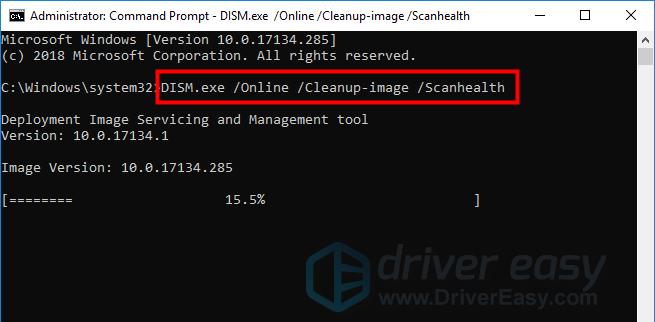
- If there’s any problem detected, type the command below and press Enter to help fix it.
DISM.exe /Online /Cleanup-image /RestorehealthOr if you see something like this:
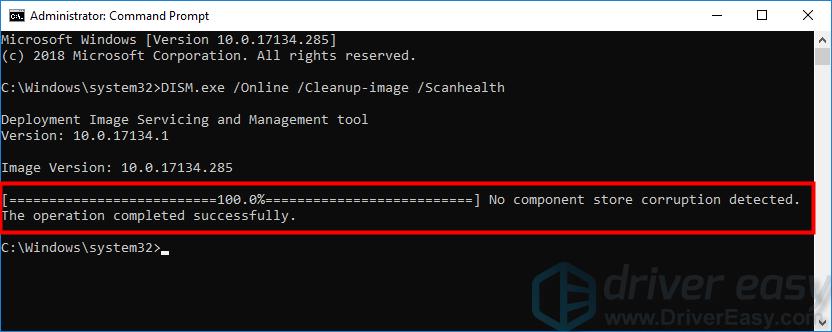
Method 3: Update your drivers
If methods 1 and 2 didn’t work for you, the most likely cause is a device driver problem. You should update your device drivers to better troubleshoot the win32kbase.sys blue screen problem.
There are two ways to update your drivers — manually and automatically.
Update your drivers manually — You can update your driver manually by going to the hardware manufacturer’s website and searching for the latest driver. But if you take this approach, be sure to choose the driver that’s compatible with the exact model number of your hardware, and your version of Windows.
OR
Update your drivers automatically — If you don’t have the time, patience or computer skills to update your drivers manually, you can, instead, do it automatically with Driver Easy. You don’t need to know exactly what system your computer is running, you don’t need to risk downloading and installing the wrong driver, and you don’t need to worry about making a mistake when installing. Driver Easy handles it all.
- Download and install Driver Easy.
- Run Driver Easy and click Scan Now. It will scan your computer and detect any problem drivers.

- Click Update All to automatically download and install the correct version of all the drivers that are missing or out of date on your system.
(This requires the Pro version – you’ll be prompted to upgrade when you click Update All. If you’re not ready to buy the Pro version, Driver Easy offers a 7-day free trial which includes access to all the Pro features such as high-speed download and one-click install. You won’t be charged anything until your 7 day trial has ended.)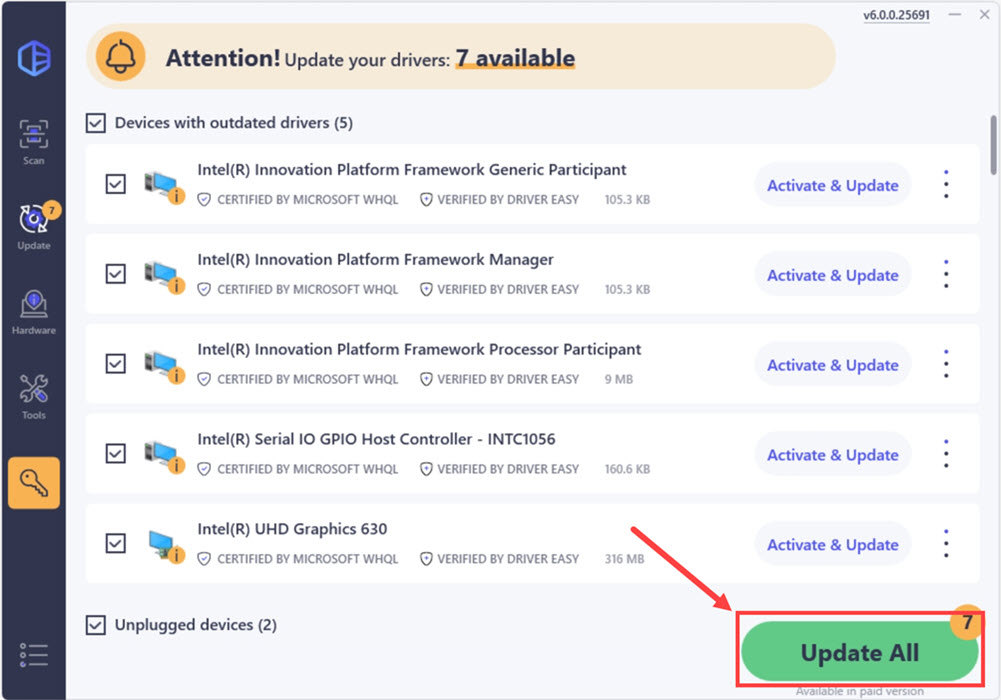
- Restart your computer and see if your problem is resolved. If not, contact Driver Easy’s support team at support@drivereasy.com for further assistance. They’d be happy to help you. Or you can move on to Method 4, below.
Method 4: Perform a system restore
If the steps above didn’t work for you and your win32kbase.sys problem only occurred recently, we recommend performing a system restore on your computer. It’ll return your system files and settings to an earlier point in time when the BSOD error didn’t occur, without affecting your files.
Here’s how to perform a system restore:
- On your keyboard, press the Windows logo key, then type create a restore point. Click Create a restore point from the list of results.
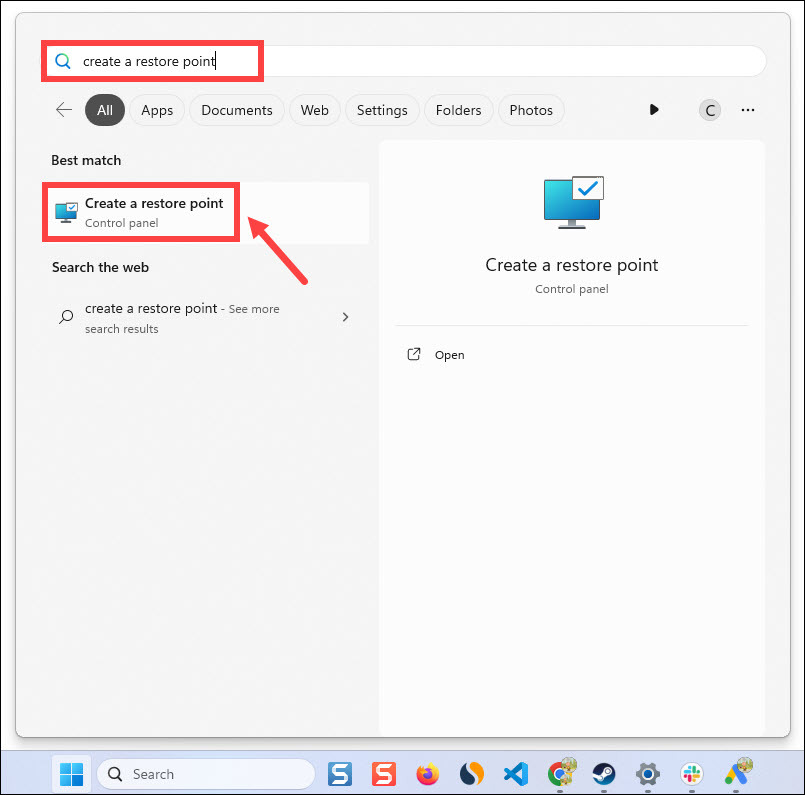
- Click System Restore.
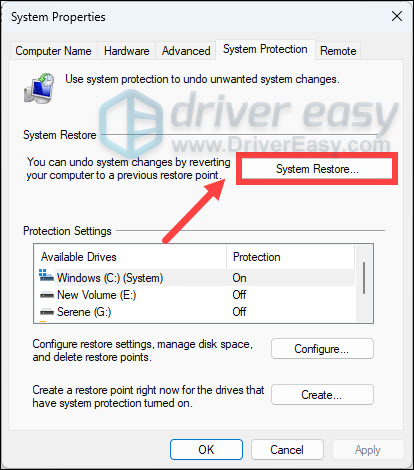
- Click Next.
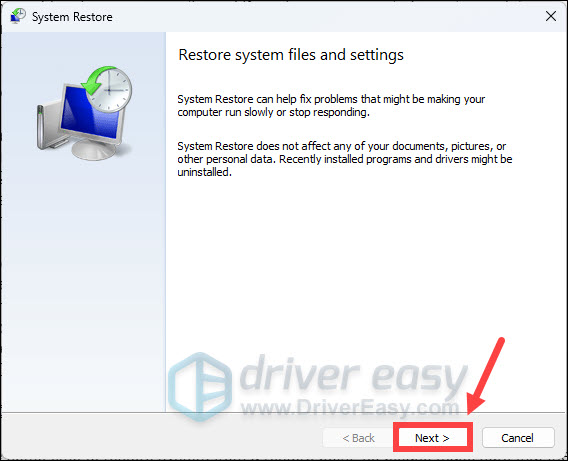
- Select the restore point that you want to use from the list of results, then click Scan for affected programs.
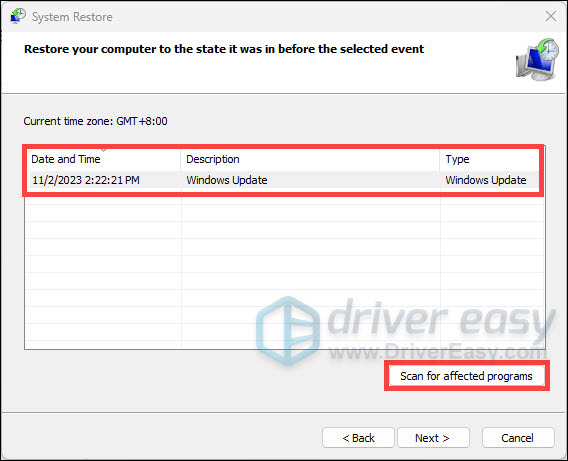
- You will see a list of items that will be deleted if you restore to this restore point. If you’re OK with the deletions, select Close to proceed.
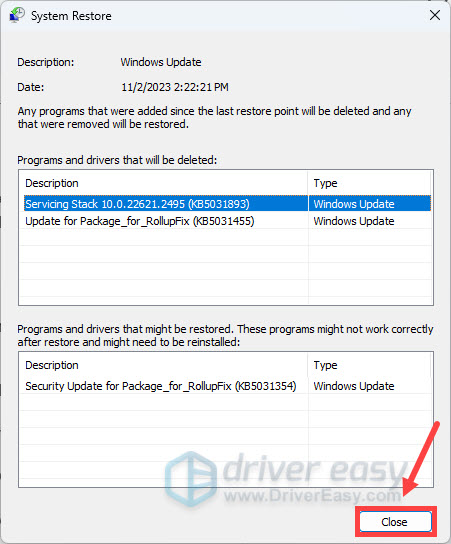
If this is not what you’re going to restore, go back to the previous step to select another restore point. - Click Next.
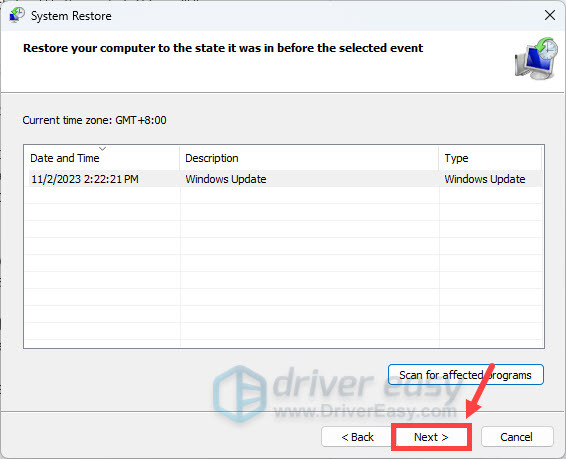
- Confirm your restore point and click Finish. Then click Yes to start restoring the system from the restore point.
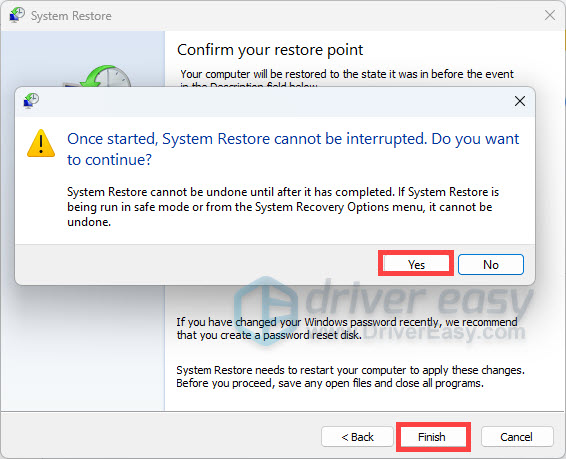
Wait for the process to complete and your computer will be restarted.
Hopefully, this can help you out.
If you have any other suggestions, please feel free to leave a comment below.





